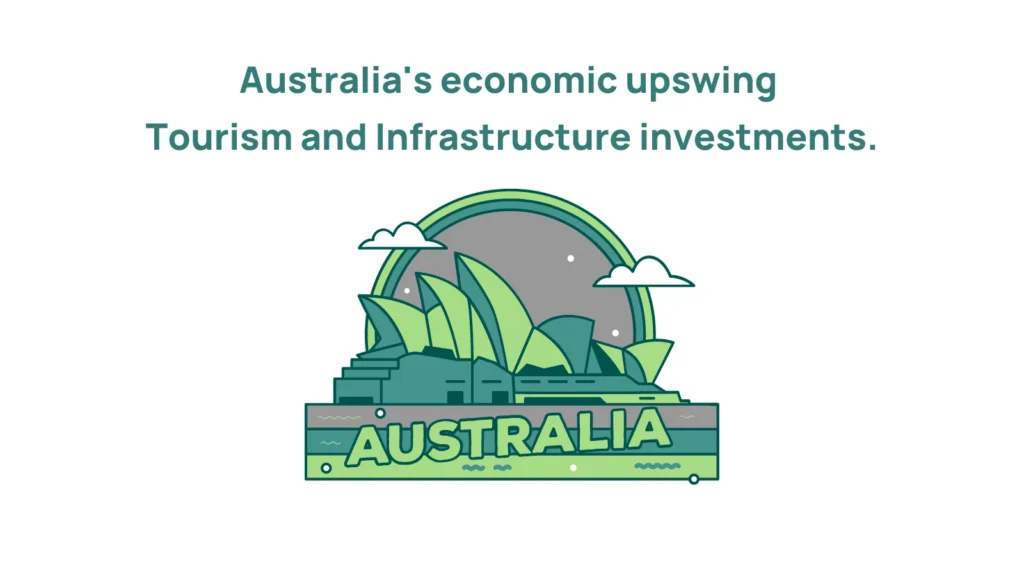Tourism & Infrastructure: A Thriving Economic Driver
Australia’s export volumes surged in the June quarter as overseas tourists flooded to the country, according to data released on Tuesday, offsetting softening in home spending and delivering a much-needed boost to economic development.
Tourist and international student spending is classified as a service export.
Other data suggest that the government spent heavily on infrastructures in the third quarter, reducing the danger of a negative GDP result.
The Australian Bureau of Statistics reported that net export volumes contributed 0.8% percent to GDP in the second quarter, more than double analyst predictions.
When most analysts expected a flat result, government spending added an additional 0.5 percentage point to growth.
Taken together, these factors should more than compensate for an 1% drag from stockpiles.
Inflation and Interest Rates Impacting Australian Economy
“Services export volumes increased by a remarkable 12.1%, buoyed by increased student and tourist flows,” said Sean Langcake, head of macroeconomic forecasting at Oxford Economics Australia.
The ABS reported that the number of overseas students in Australia has reverted to levels prior to the pandemic in the third quarter.
“This should ensure GDP growth will be positive in Q2, despite the growing headwinds to domestic demand,” said Langcake.
High inflation and rising borrowing rates have suffocated household consumption. In an effort to contain inflation, the Reserve Bank of Australia (RBA) raised interest rates to a record highest in this decade of 4.1% in June.
The tightening is having an effect, with monthly consumer price inflation dropping to a lower-than-expected 4.9% in July, falling short of last year’s peak of 8.4%.
The RBA holds its September policy meeting on Tuesday, and rates are largely expected to remain steady for a third month, with the RBA warning that another raise may be necessary.
According to the data released on Tuesday, Australia’s nominal current account surplus shrank to A$7.7 billion ($4.96 billion) in the June quarter as the prices of several of the country’s resource exports declined.
The terms of trade, which measure the ratio of export prices to import prices, fell 7.9% in the third quarter, the largest decrease since mid-2009.
(1 US dollar = 1.5518 Australian dollars)
>>> You may be also interested in:
Unveiling the Top 10 Highest Income Tax States in 2023




 anywhere
anywhere  anytime
anytime